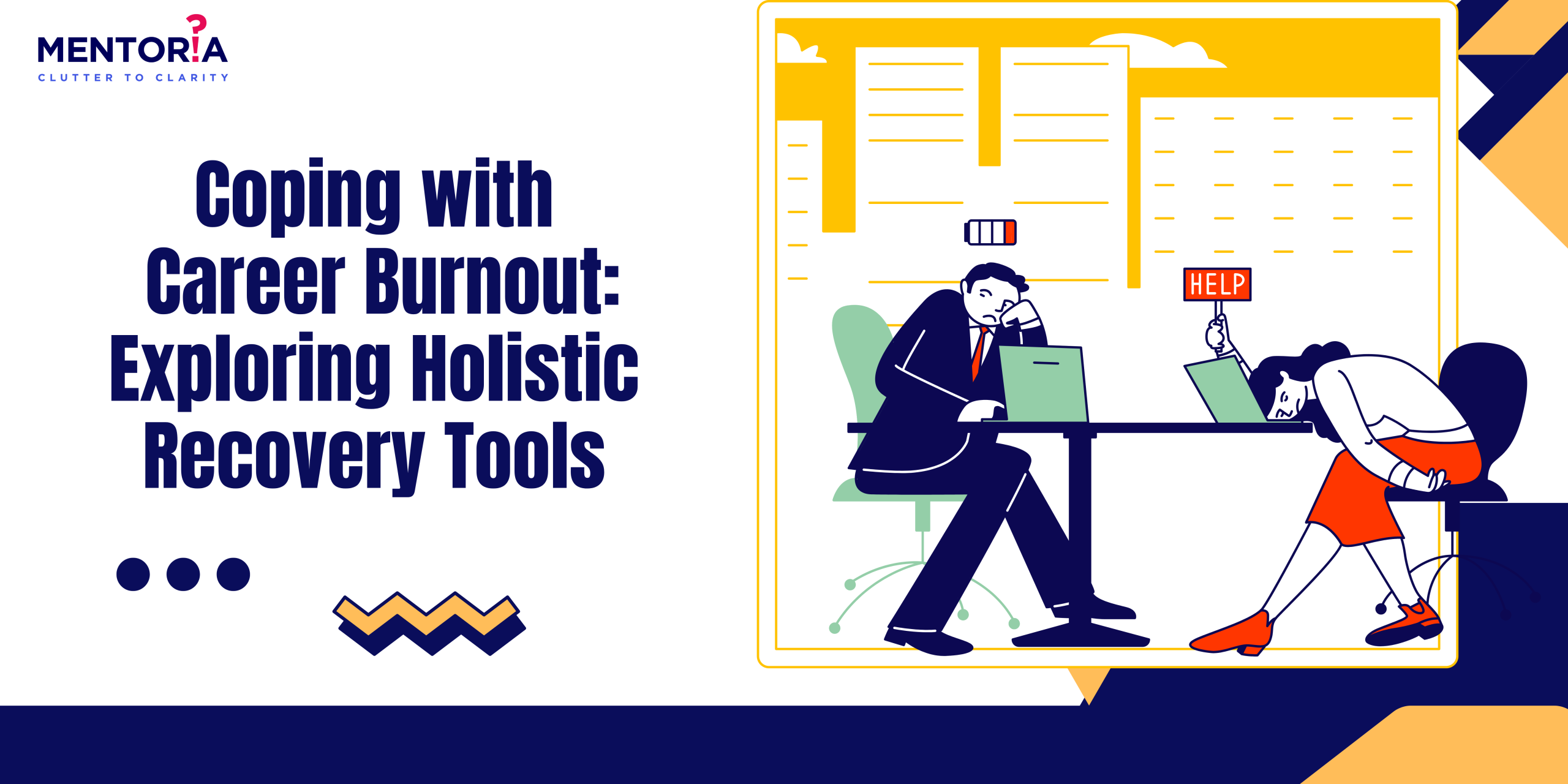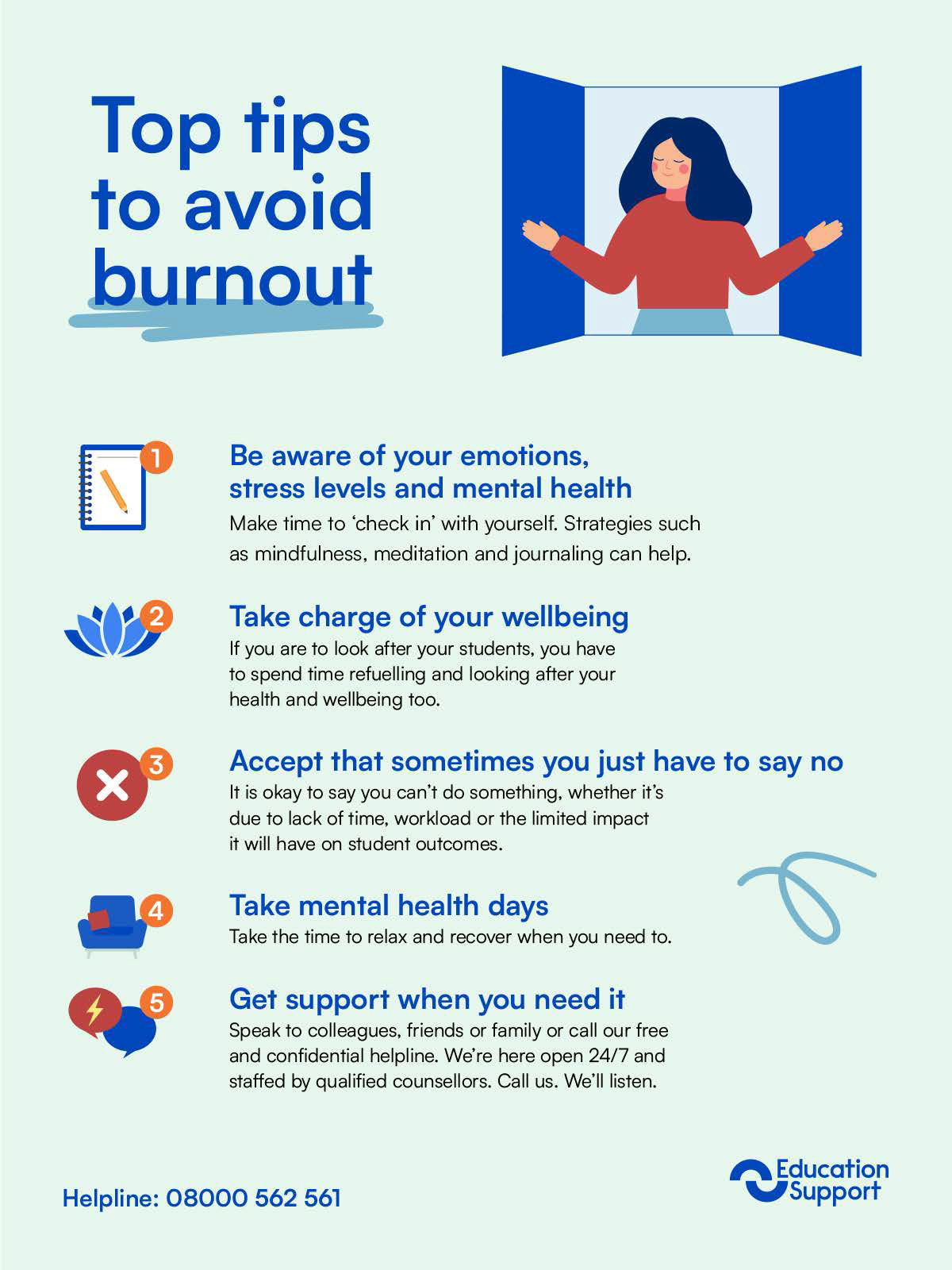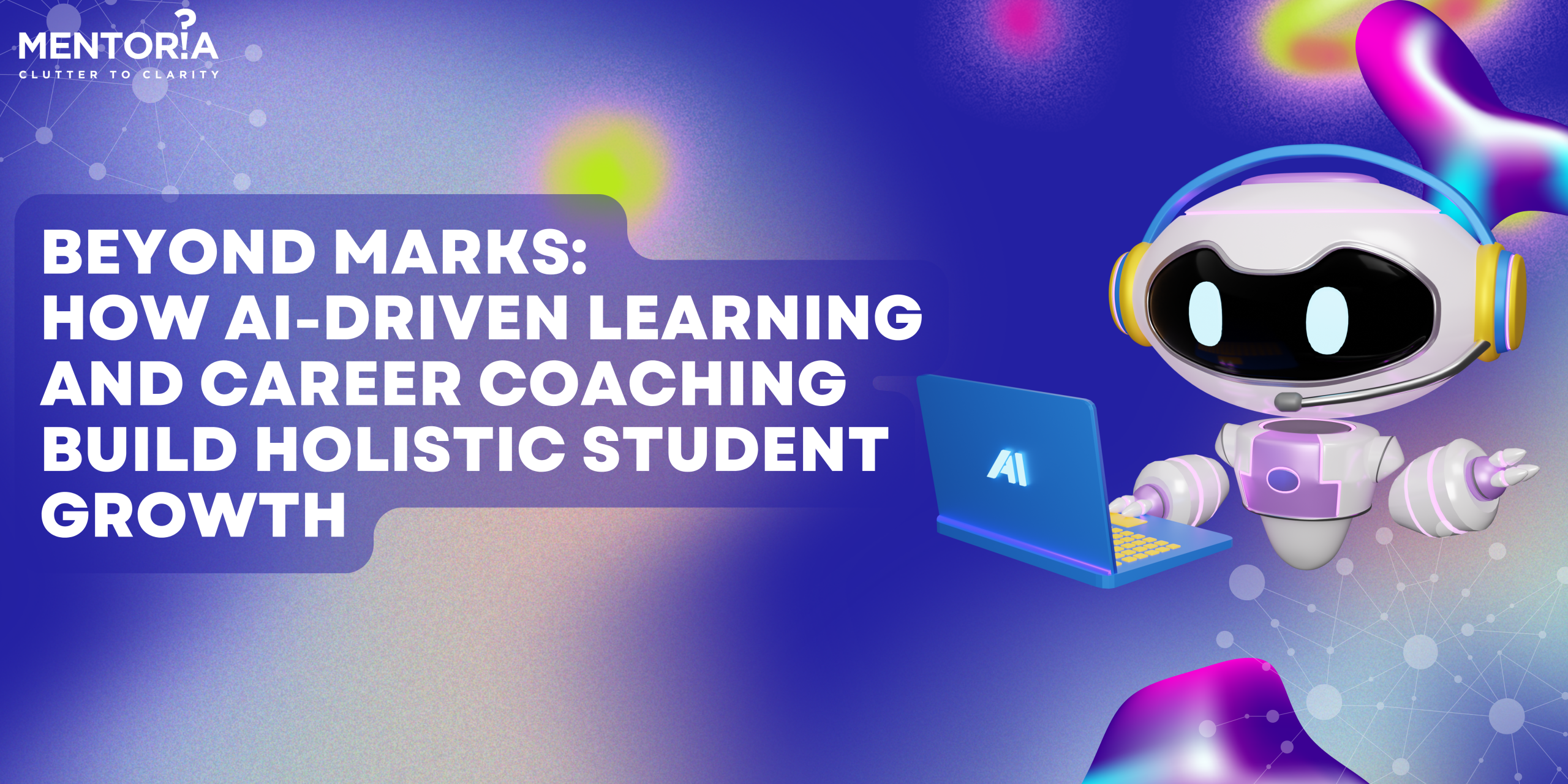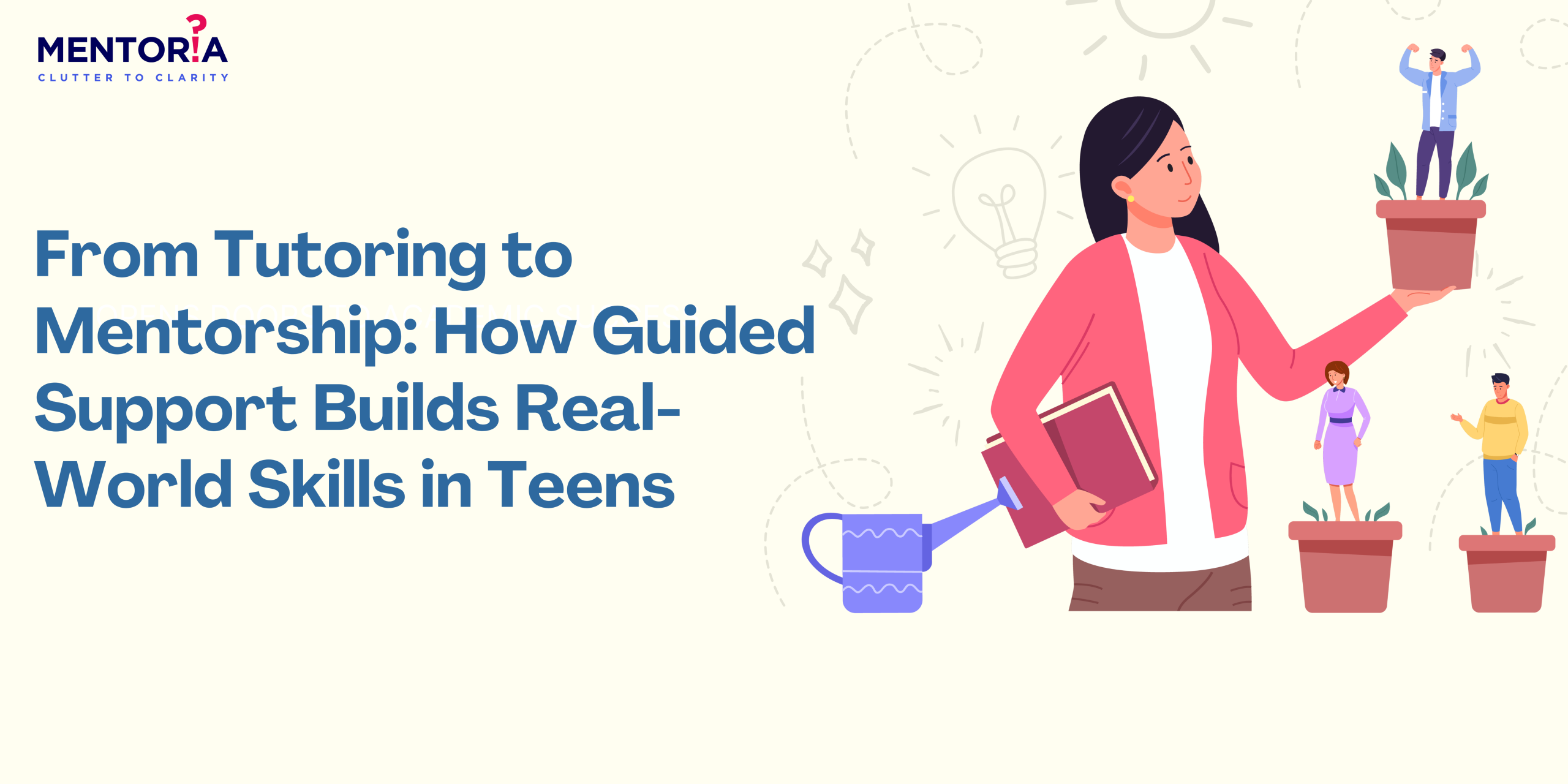Coping with Career Burnout: Exploring Holistic Recovery Tools

Jump to Section
Career burnout extends beyond experiencing a single bad day at work. It is not simply the result of a tough week either. It’s a state of chronic stress resulting from prolonged workplace stressors, such as excessive stress and lack of support, leading to emotional and physical exhaustion.
Unlike regular stress, which can sometimes be a motivator, job burnout leaves individuals feeling drained, ineffective, and disconnected from their work. Recognized by organizations like the World Health Organization as an occupational hazard, stress and burnout is a serious issue that affects not just the individual but also the workplace as a whole.
The symptoms of burnout manifest in various ways—persistent fatigue, feeling overwhelmed, and even physical symptoms like headaches and muscle tension. While burnout and clinical depression share overlapping symptoms, they are distinct conditions. Signs of burnout specifically stem from work-related stress, whereas depression has broader and more varied causes. Burnout symptoms can include these feelings and signs.
The Psychology of Burnout: What It Really Feels Like
Burnout is a complex psychological state characterized by three core dimensions:
- Emotional exhaustion: manifests as a deep sense of fatigue that doesn’t go away with rest. You might find yourself waking up tired even after a full night’s sleep, struggling to muster the energy for daily tasks. This ongoing fatigue is emblematic of burnout, making you feel constantly drained and can lead to mental exhaustion.
- Depersonalisation
- Reduced personal efficacy
Depersonalisation, another dimension of burnout, involves a sense of detachment from your work and colleagues. You might start feeling numb or indifferent towards your job, as if you’re simply going through the motions. This emotional distancing can lead to strained relationships and a lack of motivation, further compounding the problem.
Finally, a reduced sense of personal interests efficacy is the feeling of being ineffective in your role. Tasks that once brought satisfaction now seem insurmountable, and you might doubt your abilities and accomplishments. This erosion of self-confidence can lead to decreased productivity, making it even harder to break free from the cycle of burnout.
Why Traditional Fixes Don’t Work Long-Term
When faced with burnout, many turn to conventional solutions like taking a vacation, switching jobs, or attending time-management workshops. While these approaches might offer temporary relief, they rarely address the root causes of burnout. The problem lies in systemic imbalances and internalized beliefs about productivity and self-worth that go beyond individual coping strategies, addressing burnout. To truly overcome burnout, one must delve deeper into these underlying issues.
Taking time off or attending stress management workshops can provide short-lived respite, but they often fail to consider the ongoing stressors and the need for systemic change in the work environment. A vacation might provide a brief escape, but without addressing workplace culture and employee engagement, the relief is temporary.
True burnout recovery requires a comprehensive approach that includes self-awareness, somatic release, and a re-evaluation of how we relate to work, rest, and identity.
Restoring the Body: Somatic and Energy-Based Healing
The connection between nervous system dysregulation and burnout is profound. Chronic stress can wreak havoc on the body, leading to a host of physical symptoms. This is where somatic and energy-based healing practices come into play. Techniques like breathwork, deep breathing exercises, gentle yoga, and somatic tracking can help soothe the body and restore its resilience. These practices focus on the mind-body connection, using physical touch and movement to release stress and trauma.
Practices like Reiki aim to balance the body’s energy levels, fostering relaxation techniques and emotional healing. Engaging in body-centered therapies and yoga practices, along with progressive muscle relaxation, can help individuals process feelings of burnout by fostering a deeper awareness of physical sensations. Integrating physical movement with emotional awareness, these techniques provide a comprehensive approach to healing.
One particularly effective method for physical recovery is PEMF therapy for pain. Pulsed electromagnetic fields can reduce inflammation, relieve muscle pain, and energise the system, making it an excellent tool for those whose burnout manifests physically.
Processing Emotions and Rewriting Inner Narratives
Emotional and psychological tools are crucial for burnout recovery. Emotional suppression, perfectionism, and fear of inadequacy often accompany burnout, creating a toxic inner narrative that exacerbates stress. Therapeutic tools like expressive writing, trauma-informed counseling, and self-compassion practices can help individuals feel and process the emotions they’ve been avoiding.
Mindfulness practices and focusing on sensory experiences can help individuals stay present and counteract negative thought patterns associated with burnout. Cognitive behavioural therapy principles can support individuals in understanding how their thoughts influence emotions and behaviours, aiding in the recovery process.
Group therapy or wellness circles can also be beneficial. Carefully designed sound environments using quality PA systems can enhance the emotional healing experience.
Nourishment and Regulation: Food, Sleep, and Gut Health
Burnout is not just a mental or emotional issue—it’s deeply connected to the body’s physiological systems. Key factors include:
- Diet, sleep patterns, and gut health play a crucial role in overall well-being and mental and physical health.
- High-quality foods provide essential nutrients that protect against oxidative stress and support brain function and mood and energy levels.
- Diets rich in refined sugars can exacerbate mood disorders and lead to cognitive decline, potentially resulting in sleep disturbances and affecting mental and physical health.
Serotonin, a neurotransmitter crucial for regulating mood and sleep, is primarily produced in the gut, highlighting the connection between gut health and emotional well-being. Beneficial gut bacteria play a vital role in mood regulation and inflammation control, influencing overall mental health.
Implementing supportive daily routines like consistent mealtimes, reduced caffeine intake, and the use of adaptogenic herbs can significantly improve emotional regulation and support physical and emotional health.
For individuals seeking to become more intentional with their food habits—either personally or professionally—enrolling in a structured learning program like the food safety course level 3 can be a valuable step.
Not only does it build knowledge around safe and nourishing food practices, but it also encourages a mindful relationship with what we consume, reinforcing the role of nutrition in mental and emotional recovery.
Travel as a Reset Tool for Perspective and Identity
Travel can be a powerful tool for burnout recovery, offering a break from daily routines and a chance to gain new perspectives. Time spent in nature, slower-paced environments, or culturally rich locations can help individuals reconnect with their authentic values and restore a sense of possibility. Travel provides a unique chance for self-reflection, enabling individuals to reassess their goals and values away from daily distractions.
Experiencing new environments can stimulate creativity and problem-solving abilities by forcing the brain to engage differently. Physical activities associated with travel, such as hiking or walking, can boost mood and decrease anxiety by releasing endorphins.
One emerging destination worth considering is Labuan Bajo in Indonesia, a coastal retreat known for its natural beauty. With the recent launch of Jetstar Asia flights from Singapore, it’s now easier to explore such locations.
Redefining Identity Through Self-Expression and Ritual
Burnout doesn’t just deplete energy—it strips away identity. Rebuilding confidence, purpose, and emotional grounding often involves small acts of self-expression and ritual. Creating personalized routines around morning intentions, end-of-day wind-downs, and symbolic actions can be powerful tools for recovery. Self care rituals can serve as meaningful practices that help in grounding one’s identity and facilitating personal transformation.
Choosing a piece of jewelry to represent strength, rebirth, or boundaries can be part of reclaiming one’s self-image after burnout. Online gold jewellery Singapore offers a variety of options for those looking to incorporate symbolic jewelry into their recovery journey. These wearable symbols can act as emotional anchors, providing a sense of stability and continuity during the healing process.
Expressive activities, such as art or writing, can facilitate healing and provide a platform for individuals to explore their identities.
Sustaining Recovery: Creating a Lifestyle That Prevents Burnout
As we approach the conclusion, it’s important to emphasize that burnout recovery is not a one-time event but a slow, layered reorientation towards work life balance. Integrating the various holistic tools discussed earlier can help create a sustainable lifestyle that supports long-term well-being. Crucial elements in this process include:
- Boundaries
- Intentional rest
- Aligned work
- Community support
Experimenting with different practices and staying curious about what works for your unique nervous system and lifestyle is key. Whether it’s incorporating mindfulness practices, engaging in supportive relationships, or setting boundaries, the goal is to create a lifestyle that prevents burnout rather than merely addressing its symptoms. These self care practices and self help tips can guide you in this journey to manage stress.
By embracing a holistic therapies approach to recovery, individuals can restore balance, reduce stress, and improve their overall physical and mental health.
Conclusion
Burnout can be a catalyst for profound transformation. Healing is not about returning to the same patterns that led to burnout but about forging a new way of living that prioritizes vitality, authenticity, and connection. Embracing holistic recovery tools allows individuals to emerge stronger, more resilient, and more connected to their true selves.
The journey of recovery is unique for each person, but it is a shared human experience. You are not alone in this process. Holistic recovery is not just possible—it can be beautiful, meaningful, and lasting.
Frequently Asked Questions
What is career burnout, and how is it different from regular stress?
Career burnout is a state of chronic exhaustion and disengagement caused by prolonged work stress, distinguishing it from regular stress, which is often temporary and linked to immediate pressures. It results in a profound sense of ineffectiveness and emotional depletion that can significantly impact one’s professional life.
Why don’t traditional fixes like vacations or time-management workshops work for burnout recovery?
Traditional fixes like vacations or time-management workshops often miss the core issues behind burnout, such as systemic imbalances and beliefs about productivity. A comprehensive recovery approach is needed, focusing on self-awareness and a re-evaluation of our relationship with work and rest.
How can somatic and energy-based healing practices help with burnout recovery?
Somatic and energy-based healing practices effectively support burnout recovery by promoting relaxation and emotional healing through the mind-body connection. Engaging in techniques like breathwork and yoga can help release stress and trauma, enhancing overall well-being.
What role does diet and gut health play in burnout recovery?
Diet and gut health are crucial for burnout recovery, as nutrient-rich foods and a healthy gut microbiome support brain function and mood regulation. Prioritizing a balanced diet can enhance overall well-being and help mitigate the effects of burnout.
How can travel help in overcoming burnout?
Travel is an effective way to combat burnout, as it offers a break from daily routines that allows for relaxation and rejuvenation. By immersing yourself in new experiences, you can enhance your mood, spark creativity, and gain valuable perspective.













